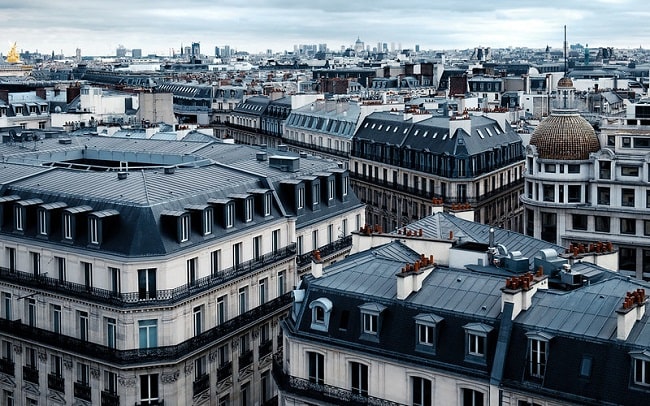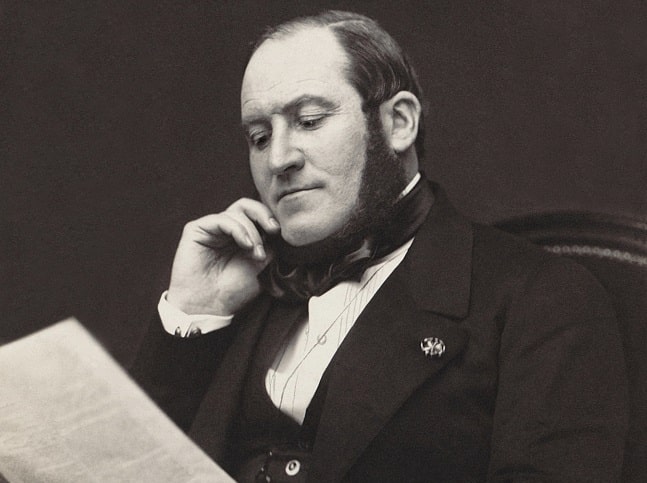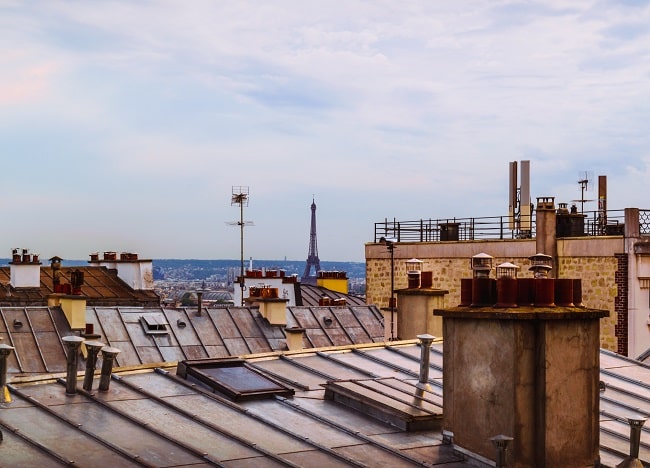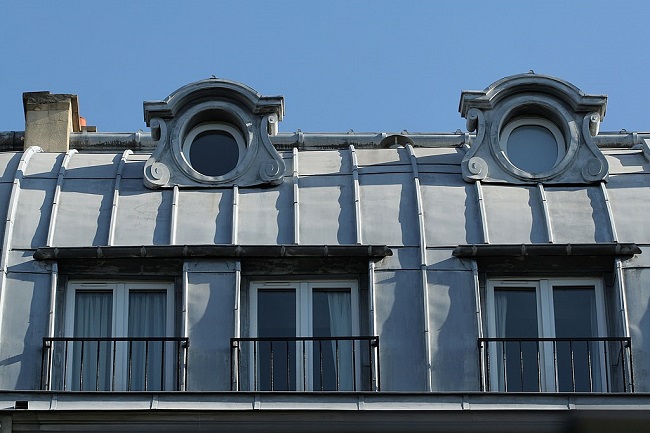Should the Zinc Rooftops of Paris Get UNESCO Recognition?


- SUBSCRIBE
- ALREADY SUBSCRIBED?
BECOME A BONJOUR PARIS MEMBER
Gain full access to our collection of over 5,000 articles and bring the City of Light into your life. Just 60 USD per year.
Find out why you should become a member here.
Sign in
Fill in your credentials below.
Almost everything we love and hold dear about the City of Light today, we owe to the singular brilliance of Georges Eugène “Baron” Haussmann. In 1853, when he began the renovation of Paris for Emperor Napoleon III, he was unaware of the cultural impact his reconfiguration of the city would have. As a former architect, I find his vision inspiring. Not only was he prescient about humanizing the scale of the city, but he also knew instinctively that in a grand, large-scale design, rhythm and harmony of materials were essential. Today, the beautiful, iconic zinc rooftops of Paris (the same ones Haussmann specified) — and the workers who create them — are being considered for UNESCO’s list of French Intangible Cultural Heritage.
The use of zinc for Paris roofs can be traced back to the work of the cleric, Jean-Jacques Dony (1759-1819) of Liège. In the early 19th century Liège was part of France (today it is part of Belgium). More than religion, chemistry fascinated Dony. By his early 20s he had his own laboratory. He spent 25 years researching the smelting of zinc. Zinc is present in the earth, air and water. It is distinctly non-toxic, a trace element that is indispensable for all living organisms, a fundamental part of the metabolic processes of plants, animals and humans. In the human body, over 300 enzymes require zinc for proper functioning.

George Eugène “Baron” Haussmann. © Wikipedia, Public Domain
Although zinc compounds had been used for at least 2,500 years in the production of brass, zinc wasn’t recognized as a distinct element until 1668, when a Flemish metallurgist, P. Moras de Respour, pioneered the extraction of metallic zinc from zinc oxide. As far as Europe was concerned, however, zinc was discovered by the German chemist Andreas Marggraf in 1746, who was the first to distinguish it as a new metal.
While chemists tried to handle zinc (formerly known as Indian Tin) it was Dony who discovered and patented a procedure for processing and refining what is today the fourth most commonly used metal. In 1805, Emperor Napoléon granted him a monopoly for the exploitation of the zinc mines of Moresnet, 50 kilometers east of Liège, on condition that he pay an annual royalty of 40,500 francs (approximately €15,000 today). Soon he was supervising the extraction of the rich zinc ore deposits at Vieille Montagne (old mountain) near Aix-la-Chapelle. Dony showed his gratitude to Napoleon by presenting him with a zinc-lined bath. Napoleon was so thrilled by its light weight and utility that he took it on his subsequent campaigns, including his invasion of Russia in 1812. The bath can still be seen at the Maison de la Metallurgie et de l’Industrie in Liège.

Statue of Charlemagne in the centre of Liège. © Wikipedia, Public Domain
By 1813, Dony found himself unable to pay the annual royalty and was forced to sell his patent and mining rights. He died in poverty in 1819. However, the company he founded grew and prospered to become the largest zinc-producing company in the world. In 1837, the Société des Mines et Fonderies de Zinc de la Vieille Montagne was created. The new industrial uses of zinc with its undeniable properties of flexibility, durability and resistance to corrosion, arrived just when Haussmann began transforming the city.
At that time, most Parisian roofs were made of either wood, tile, or slate. New construction on such a massive scale called for a faster and more economical roofing material. Zinc sheets were substantially lighter and easier to install, and they protected buildings from water damage. Zinc roofing could be used to create curved shapes or sharply angled roofs, allowing for more elaborate designs to suit the aesthetics of the 19th century Belle Epoque, including the creation of attic rooms, which are highly sought after living spaces today.

Parisian rooftop. © Léonard Cotte, Unsplash
Zinc roofing, generally formed with copper and titanium, has been popular with European architects for almost 300 years. The majority of a zinc metal roofing system can last for well over 120 years. Today, architects are returning to this traditional material for reasons unknown in its storied past. Zinc has chemical and physical properties which make it one of the most environmentally advantageous building materials available. For example, the energy that is required to produce a zinc roof is much less than that required to produce other types of roofing materials. When a zinc roof is produced from recycled materials, the energy consumption is even lower. Zinc can be completely recycled with no concerns over it degrading or losing its initial properties.
The exposed zinc rooftops which still cover 85 percent of the iconic Parisian skyline owe their beautiful patina to a natural process. When zinc is exposed to oxygen, the surrounding air produces a thin layer of zinc oxide, which reacts with water to form zinc hydroxide. The hydroxide then reacts with carbon dioxide in the atmosphere to form a stable, long-lasting surface patina, zinc hydroxyl carbonate. Important features of zinc roofs are the zinc-covered seams that join the sheets, creating the characteristic striped tone-on-tone look of the roofs. These protective joint coverings are essential. If there is water present at any point during installation, the zinc hydroxide will eat away at the back of the metal to produce what is called “white rust” and eventually the zinc will simply flake away. Proper installation is therefore crucial.

Zin on Boulevard Saint-Michel (Paris). © Wikipedia, Public Domain
In 2014, a Paris council applied for zinc roofing to be included in UNESCO’s list of French Intangible Cultural Heritage. However, it is not the zinc roofs themselves that need protection, rather, it is the techniques and knowledge of the Parisian couvreurs-zingueurs, zinc roofers themselves, who work year-round to build, maintain, and repair the zinc-covered roofs of Paris. There are currently some 500 couvreur-zinguers working in Paris. In 2018, the application was finally approved and in March 2019, it was selected to be presented in a committee session at UNESCO. It is hoped that this acknowledgment will attract young workers to the profession, ensuring its artistry continues in the future.
The current French Minister of Culture, Roselyne Bachelot, has until mid-March 2021 to decide which of the three nominations will be submitted to President Macron for consideration as the French selection for UNESCO’s 2022 list of Intangible Cultural Heritage: the beloved French baguette, La Percée du Vin Jaune (a Jura wine festival), or Paris’ zinc rooftops.
Lead photo credit : Parisian zinc roofs. © Flickr
More in design, rooftops in Paris, science, Zinc




REPLY
REPLY